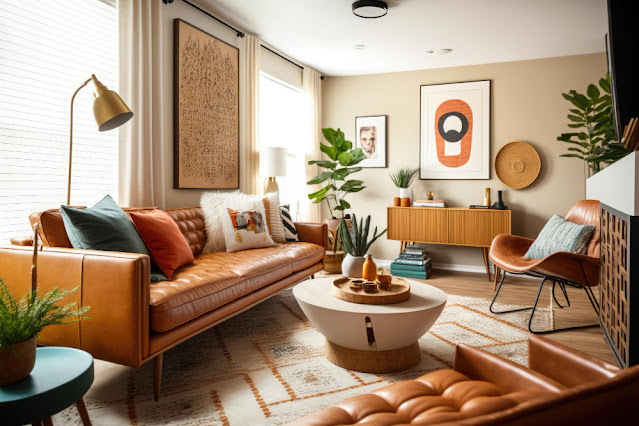Our homes are more than just buildings; they are our sanctuaries, places where we seek comfort and solace. Creating a comfortable living space is essential for our well-being and overall happiness. Whether you're looking to revamp your home or make small changes, these seven tips will help you transform your space into a cozy haven. Plus, if you're in Cape Town, interior designer Cape Town can provide expert guidance to make your vision a reality.
Embrace Cozy Textures
Textures play
a pivotal role in creating a comfortable atmosphere. Soft, plush fabrics like
velvet or faux fur can instantly make your home feel warm and inviting.
Consider adding throw pillows, blankets, and rugs in these materials to your
furniture and floors. These tactile elements not only provide physical comfort
but also add a touch of luxury to your space.
Choose Soothing Colors
The color
palette of your home significantly influences its comfort level. Opt for
soothing and calming colors like soft blues, gentle greens, warm neutrals, and
muted pastels. These shades create a serene ambiance that promotes relaxation.
Painting your walls or incorporating these colors through decor accents can
make a significant difference.
Personalize Your Space
Adding
personal touches to your home can make it feel uniquely yours. Display family
photos, artwork, or mementos that hold sentimental value. Incorporating
elements that reflect your personality and interests creates a sense of
belonging and comfort.
Create Cozy Nooks
Designating
cozy nooks in your home is a great way to maximize comfort. Whether it's a
reading corner with a comfortable chair and good lighting or a window seat with
cushions, these small retreats offer spaces to unwind and enjoy moments of
solitude.
Soft Lighting
Lighting can greatly
impact the comfort of your home. Consider using soft, warm lighting options
like table lamps, floor lamps, and candles. These create a more inviting and
relaxed atmosphere compared to harsh, bright lights. Dimmer switches are a
great addition for flexibility in lighting levels.
Invest in Quality Furniture
Comfortable
furniture is essential for a cozy home. Invest in pieces that not only look
good but also offer ergonomic support and cushioning. Sofas and chairs with
deep seats, plush cushions, and sturdy frames provide both comfort and style.
Declutter and Organize
A clutter-free
space contributes significantly to comfort. Regularly decluttering and
organizing your home can create a sense of calm and order. Consider storage
solutions that help keep items out of sight, such as cabinets, shelves, and
storage ottomans.
In Cape Town,
interior designer Cape Town and affordable interior designers Cape Town can
help you implement these tips while tailoring the design to your specific needs
and preferences. They have the expertise to optimize your space for comfort and
style, taking into account factors like layout, color schemes, and furniture
selection.
Conclusion
Turning your
home into a comfortable haven is a rewarding endeavor that enhances your
quality of life. By incorporating these seven tips and seeking the expertise of
interior designer Cape Town or affordable
interior designers Cape Town, you can elevate your living space to new
levels of comfort and coziness. Remember, a comfortable home is not just a
physical space; it's a reflection of your personality and a source of solace
and joy.

